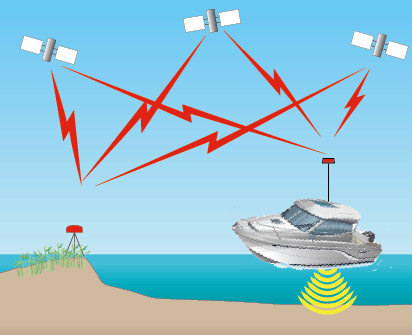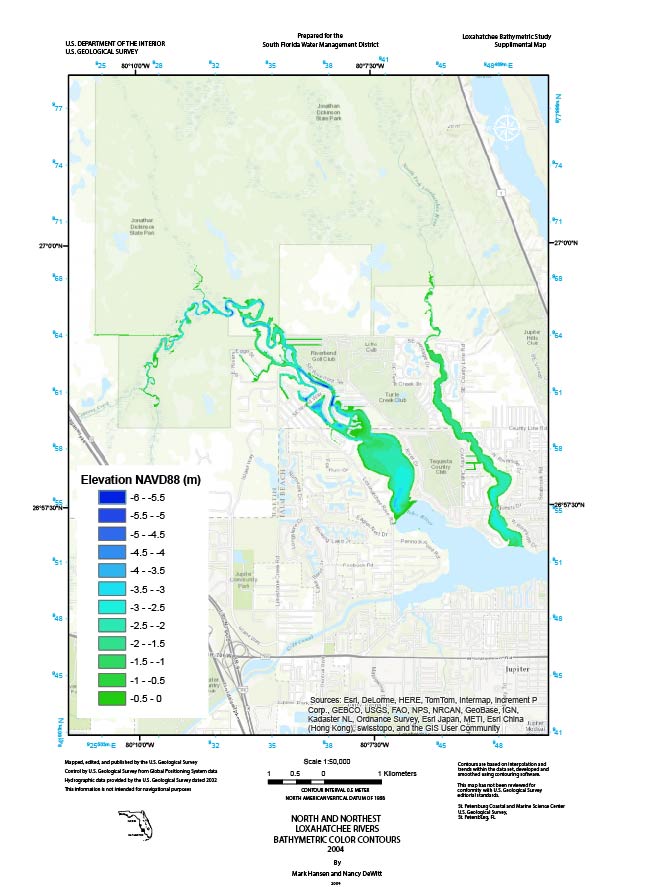Project Description - North and Northwest Forks of the Loxahatchee and Lower St. Lucie Rivers (2003)
|
Figure 26. Project study area - Loxahatchee and St. Lucie Rivers, Florida. [Click on icon for link to data page] The Loxahatchee River (fig. 26) and estuary is a shallow water body, located in southeastern Florida that empties into the Atlantic Ocean at Jupiter Inlet. The watershed drains an area of more than 520 square kilometers (km2) within northern Palm Beach and southern Martin Counties. Historically, this system was primarily freshwater; however, tidal flows opened the inlet periodically allowing for a mixed environment. In 1947, the inlet was dredged for navigation and has remained permanently open since that time. Drainage patterns within the basin have been significantly altered due to drainage and development, road construction (such as Florida Turnpike, BeeLine Highway), and construction of the C-18 canal which provides flood protection for residential areas. The St. Lucie estuary This project addresses the collection and interpretation of data necessary to develop the present day bathymetry of the Loxahatchee and St. Lucie Rivers (fig. 27). These surveys support several South Florida Water Management District (SFWMD) efforts including the development of minimal flow levels (MFL) for the Loxahatchee and St. Lucie Rivers, and the Indian River Lagoon Feasibility Study. These state-mandated efforts will utilize data obtained from the surveys to develop hydrodynamic models, which are essential in understanding the ecological processes of each of these coastal systems. This project also supports other nonmodeling efforts such as the determination of the oligohaline zones in the St. Lucie River systems. Figure 27. Color contour map of North and Northwest Forks of the Loxahatchee River, Florida. [Click to enlarge] |
SURVEY HIGHLIGHTS
|












